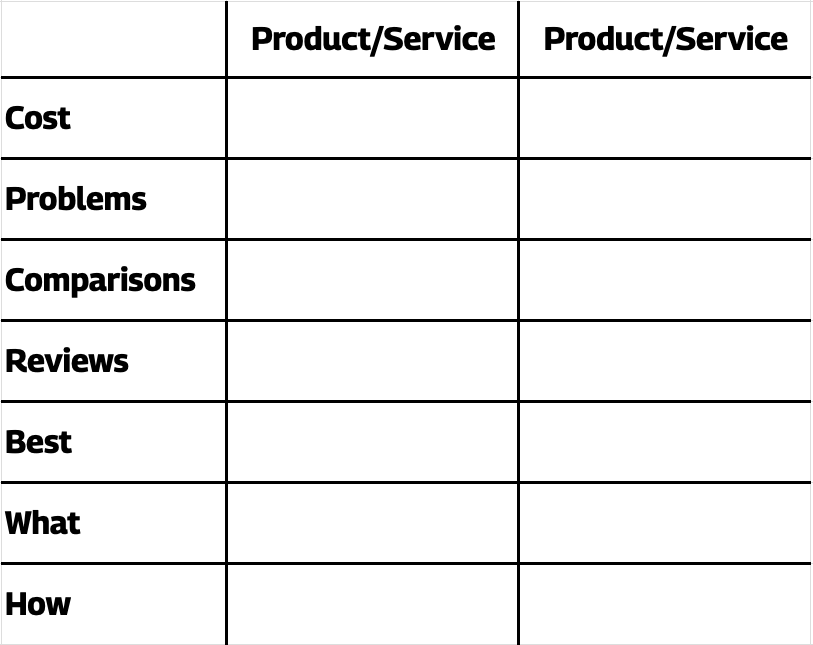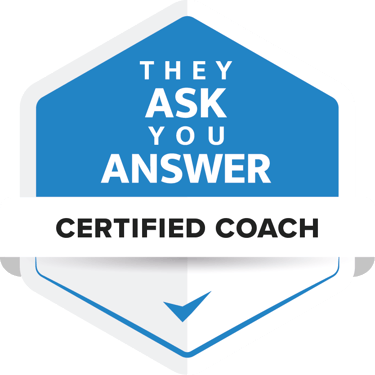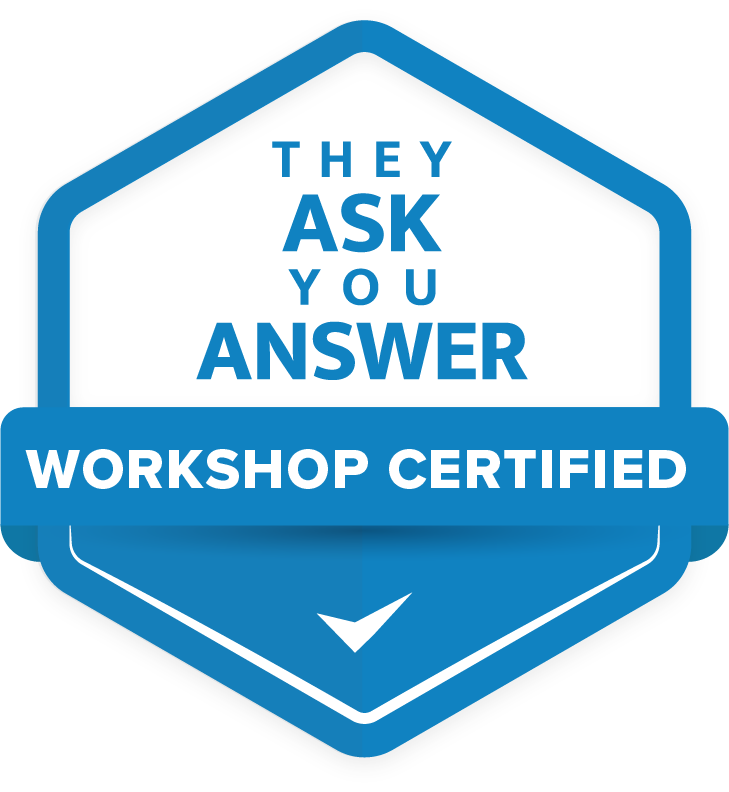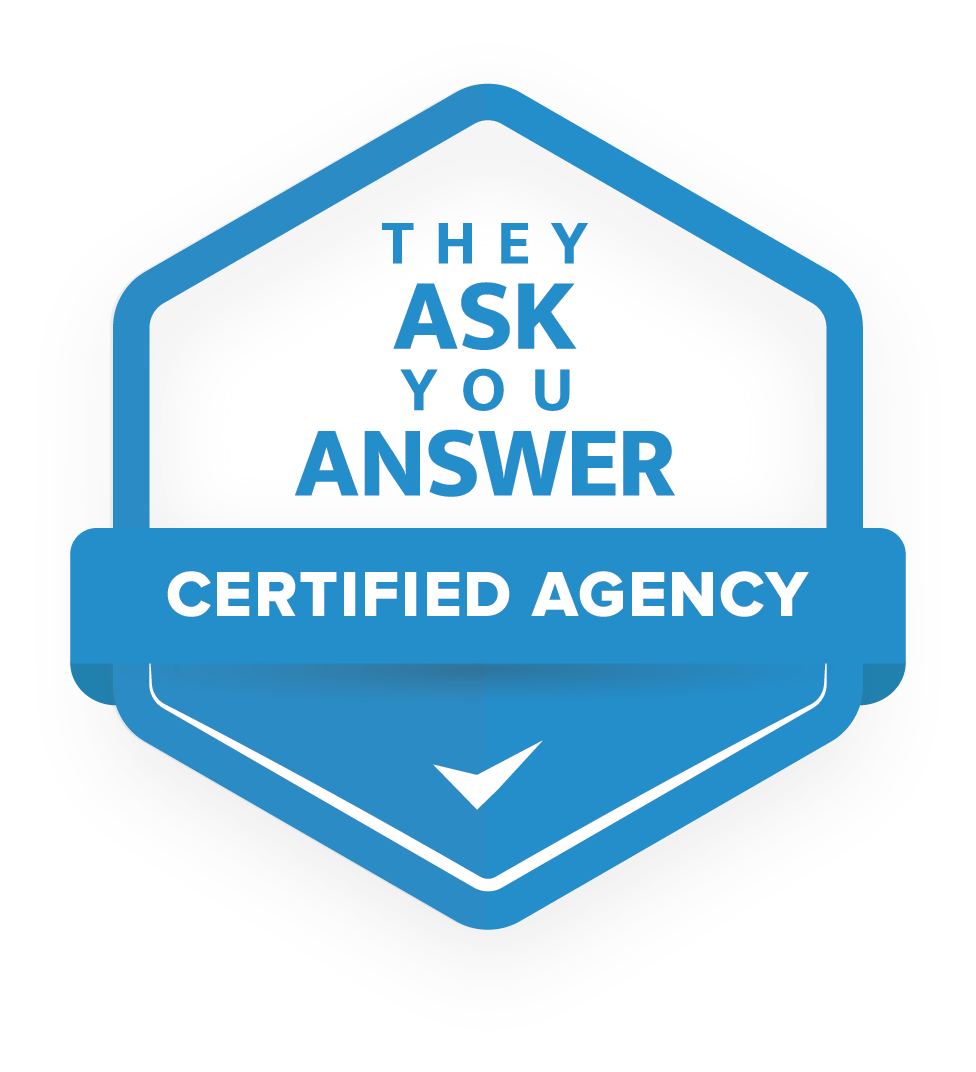From tofu to bofu: this is how to start writing TAYA content

You've just been appointed content manager and you're expected to start writing your content according to the They Ask, You Answer (TAYA) philosophy.
If you already have experience with content writing, it can be quite a transition. You're used to doing (or having done) keyword research and determining which topics to pick up first, based on that research. But now you have to write primarily for sales, not SEO.
So it's quite understandable that you might wonder how you determine what to write about if you don't start with keyword research.
As a coach and content trainer at Buzzlytics, I understand what you're up against. I've helped several content managers like you write their first TAYA article, and I know how big of a transition it can be from writing for SEO to writing for sales.
In this article, I explain:
- What I often see go wrong with new TAYA content managers
- What makes TAYA content different from SEO content
- what steps you need to go through before you can write your first article
So by the end of this article, you'll know where to start when writing TAYA content.
What we often see go wrong with new content managers
Most content managers just starting out have no idea what TAYA entails.
As a result, they underestimate the differences from how they are used to writing and what the implications of the TAYA framework are for how they write and for how they determine what they write about.
They often think at first that TAYA is nothing more than some blog writing intended for SEO. But TAYA is not primarily about generating search traffic, but about generating sales. You do this by answering your customers' questions as transparently and reliably as possible in your content.
Moreover, TAYA requires a different mindset. The goal is not to sell as much as possible, but to inform a potential buyer as completely and transparently as possible so that he can decide for himself what would be the best option for him. To do this, you need to position yourself in your content as a guide and a teacher, rather than as the hero who necessarily has the best solution for the customer
Thus, the implications of the TAYA framework are far greater than often thought.
Also read: Can every senior content manager become a TAYA content manager?
TAYA is not primarily about generating search traffic, but about generating sales.
Starting with tofu or bofu content
The difference between TAYA content and content generated for search engines is in what you start with: tofu (top-of-funnel) or bofu (bottom-of-funnel) content
Many content managers focus primarily on creating tofu content. This means they start with keyword research, write articles that should attract traffic, and hope this eventually leads to conversions. While this can work in some cases, more traffic does not necessarily lead to more sales.
When you start with bofu content, as we do within TAYA, you first focus on the customer questions that express a buying intent. As a result, the content has a more direct impact on sales results.
Within TAYA, we distinguish five categories of blog topics that we see time and again contribute to more sales.
They are:
- costs and prices
- Content in which you discuss the problems, shortcomings and drawbacks of your product
- comparisons between different products or services
- 'best' reviews (the best X, the most sustainable Y, the cheapest Z, and so on)
- reviews
We call these topics the Big 5 blog topics. These topics are an excellent starting point if you want to get started with TAYA.
Within TAYA, you first focus on the customer questions that express a buying intent.
What steps should you take to arrive at your first article?
So when you get started with TAYA, you follow a different approach than is common in content marketing.
Instead of doing keyword research and deciding what to write about based on that, let the questions your customers have guide you.
The process of arriving at your first article then looks like this.
1. Brainstorming questions
The very first step is a brainstorming session, in which you gather as many questions as possible that your customers have. These can be questions that often come up during sales calls, but also questions from the customer service or development teams.
During a TAYA workshop (bookable separately, but also part of our TAYA Mastery program) we make a list of one hundred questions using a content matrix.
In this matrix, we combine the previously mentioned Big 5 blog topics with the most frequently asked what and how questions. Then, for each product or service, we list all the questions asked about it.

2. Mapping the buyer's journey
After the brainstorming phase, you map out the buyer's journey. This involves looking at the process a customer goes through from initial contact to purchase.
- Through what channels do people come to you?
- What pages do they land on?
- What actions do they take on those pages?
- And what steps come after that?
We do not distinguish between marketing and sales within TAYA, so the buyer's journey in this case includes the sales process.
By mapping the buyer's journey, you can tailor your content to the stage your reader is in.
Once you have mapped out the buyer's journey, look at all the questions, resistances and objections people may have at each stage. You can often add to the list you created in the first step, and then you can link each question or objection to a specific stage in the buyer's journey.
That way you can tailor an article very specifically to the stage the reader is likely to be in at the time of reading.
3. Prioritize
After mapping the buyer's journey, determine which questions are most pressing. These are the questions you will answer first in your content.
When doing this, focus primarily on the bottom-of-funnel questions. After all, these will have the fastest impact on the sales process. To do this, however, it is important that you not only put the articles on your website, but also share them with sales so that they in turn can share your articles with potential customers.
But how do you decide what to write about first when the company you work for sells many different products?
I often recommend starting with one product or service (or one product or service group) and that is the product or service that generates the most revenue and thus can have the greatest impact on sales.
Sometimes you can deviate from this if the management team makes a strategic decision to want to grow a particular product or service that year. In that case, you start writing about that product or service.
Also read: How do you write a blog that generates traffic, leads and sales?
Start by writing about the product or service that creates the most sales.
Step by step to your first TAYA article
Writing TAYA content can be challenging at first, especially if you're used to traditional SEO-focused content. But with the right approach and mindset, you can soon produce effective articles that contribute directly to sales.
The important thing to remember is that the core of TAYA is answering the questions your potential customers have, with an emphasis on bottom-of-funnel content. By focusing on the Big 5 blog topics and the questions closest to the buying decision, you create content that is truly valuable to your readers and sales colleagues.
At Buzzlytics, we see daily how content managers struggle with this transition, but also how they grow and achieve success with TAYA. We'd love to help you make this transition smoothly and write your first TAYA articles that have real impact.
Want to learn more about how to write effective TAYA content?
Then also read these blogs:
Related articles
May 21, 2024
-
Reading time: +/- 17 min
July 25, 2024
-
Reading time: +/- 6 min
March 25, 2024
-
Reading time: +/- 7 min
January 7, 2025
-
Reading time: +/- 8 min








